Jeremie Averous's Blog, page 110
January 24, 2015
Why the Chief Advantage of Language is Not Communication
“The chief advantage of language is not communication but autogeneration“, says Kevin Kelly in his book ‘What Technology Wants‘. “Language is a trick that allows the mind to question itself; a magic mirror that reveals to the mind what the mind thinks; a handle that turns a mind into a tool. With a grip on the slippery, aimless activity of self-awareness and self-reference, language can harness a mind into a fountain of new ideas.”
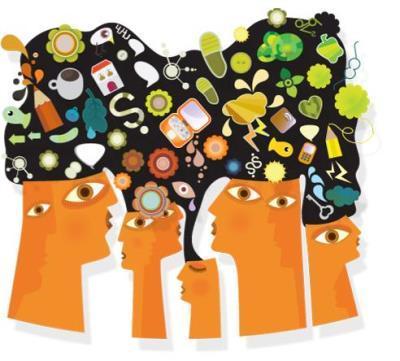 Language allows us to create new ideas. Without language our own creative capabilities are limited. Putting words on things and concepts allows us to modify our views: shifting words does shift worldviews.
Language allows us to create new ideas. Without language our own creative capabilities are limited. Putting words on things and concepts allows us to modify our views: shifting words does shift worldviews.
In addition, Kevin Kelly in this quote misses the view that language allows to mobilize the ideas and the creativity of many people at the same time. Brainstorming techniques demonstrate clearly the power of group creativity.
Hence language (which in our framework did create the First Revolution which brought us to the hunter-gatherer state) is a key part of creativity. Without language we cannot conceptualize, we cannot generalize, we cannot categorize and we cannot shift our views.
No wonder that one of the key benefits of speaking several languages is enhanced creativity and a great flexibility when facing diverse situations!
January 22, 2015
Are We at the Edge of Another Spiritual Awakening?
Kevin Kelly notes about the birth of the religions we know today that they have all appeared around the same time, when agriculture was sufficiently developed to generate abundance.
 “About 2,500 years ago most of humanity’s major religions were set in motion in a relatively compact period. Confucius, Lao-tzu, Buddha, Zoroaster, the authors of the Upanishads, and the Jewish patriarchs all lived within a span of 20 generations. Only a few major religions have been born since then. Historians call that planetary fluttering the Axial Age. It was as if everyone alive awoke simultaneously and, in one breath, set out in search of their mysterious origins. Some anthropologists believe the Axial Age awakening was induced by the surplus abundance that agriculture created, enabled by massive irrigation and waterworks around the world”
“About 2,500 years ago most of humanity’s major religions were set in motion in a relatively compact period. Confucius, Lao-tzu, Buddha, Zoroaster, the authors of the Upanishads, and the Jewish patriarchs all lived within a span of 20 generations. Only a few major religions have been born since then. Historians call that planetary fluttering the Axial Age. It was as if everyone alive awoke simultaneously and, in one breath, set out in search of their mysterious origins. Some anthropologists believe the Axial Age awakening was induced by the surplus abundance that agriculture created, enabled by massive irrigation and waterworks around the world”
When the Industrial Revolution came with printing, these religions branched somewhat with for example, Protestantism for the Christians.
He continues: “It would not surprise me if we saw another axial awakening someday, powered by another flood of technology“. The conclusion of that observation should shake us. Is the spiritual awakening we can observe around us just a trend or is it a deeper movement linked to the Fourth Revolution? I tend to believe in the latter, and I am excited to see how that will materialize in the years to come as we move into the Collaborative Age.
January 20, 2015
How to Make Communication Easier: Develop Trust!
“In any human interaction, the required amount of communication is inversely proportional to the level of trust” – says Ben Horowitz in his book ‘The Hard Thing About Hard Things‘.
 Thus, one way to improve communication is to develop trust beforehand. The reason is obvious – it removes a lot of filters and also, adds a number of assumptions that do not need to be verbalized again during actual communication.
Thus, one way to improve communication is to develop trust beforehand. The reason is obvious – it removes a lot of filters and also, adds a number of assumptions that do not need to be verbalized again during actual communication.
It is actually what marketing often tries to do: by develop trust in a brand or a person, it makes communication easier by removing obstacles to communication.
Without going into the techniques of marketing, there are a number of occasions where developing trust first before attempting to communicate a complicated message is probably the most effective way to communicate – even if that requires an investment of time and interaction.
It is possible to build trust effectively and with limited effort and time, so do not skip that step. Next time you have something complicated or difficult to communicate, do not hesitate to build trust first!
January 17, 2015
How Crisis Moments in Our Life Define Ourselves
I am always amazed at how moderately or acute crisis situations define our lives and define ourselves. Our life is but a succession of relatively quiet and stable moment with transitions or difficult situations in between. It is actually quite similar to nature’s behavior where short, catastrophic events shape the world, which otherwise is relatively quiet and stable (and denotes that we live in a complex system).
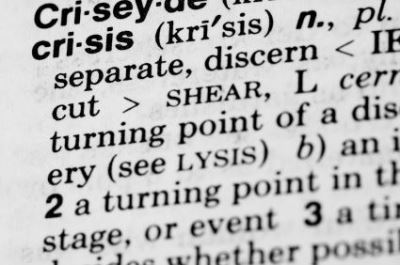 Crisis and difficult situations define ourselves by the way we respond to them. Those key moments are turning points defining our future life and therefore in many aspects our future selves.
Crisis and difficult situations define ourselves by the way we respond to them. Those key moments are turning points defining our future life and therefore in many aspects our future selves.
And there is no way we can escape from these turning points. We can try to keep the stable moments we crave as long as possible, but life is such that at some point, disaster or other types of crisis will strike.
Like we can find out true self by identifying what we dislike in others, we shape our true identity by the way we respond to crisis situations.
Faced with a crisis, a profound change in your life conditions, the way we respond reveal and shapes what we are. Crisis moments are not nice, they are a necessary evil we can’t avoid. We can just respond the way we want to be. We can, and we must shape our response, even when the world seems to be crumbling around us.
January 15, 2015
How to Get in Touch with Your True Self
Getting in touch with our true Self is very important to determine who we are and be grounded in driving our life. How can we achieve this?
 “One of the best ways to get in touch with your real self is to notice those things that you tend to passionately dislike in others” say James and Claudia Altucher in ‘The Power of No‘.
“One of the best ways to get in touch with your real self is to notice those things that you tend to passionately dislike in others” say James and Claudia Altucher in ‘The Power of No‘.
Thus, instead of trying to find a mirror to reflect who we are, we should maybe rather seek to identify what repulses us to really identify what makes us unique.
This method is quite powerful but requires certainly some subtlety. First it is not recommended to hand around too long with people you dislike. Second, some aspects that we dislike in others might not always be that obvious, and might require some research and further getting to know the person.
Situations where we have to be with people we moderately or passionately dislike, like some social or professional situations, are thus great opportunities to define ourselves better! By defining ourselves as the contrary of some behavior that we do not like, our own identity gets better defined every time it happens.
The next time you react negatively to some other person behavior, think about how this defines yourself better.
January 13, 2015
How Enticing Curiosity is a key Leadership Skill
Former secretary of state Colin Powell says that “leadership is the ability to get someone to follow you even if only out of curiosity“.
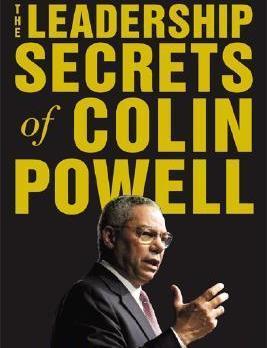 This quote made me realize that in quite a few instances I had followed a leader more out of the curiosity to see what would happen than out of certainty that following the leader would be the right path. And indeed in those instances, it turned out not to be the easy way, still it was probably the most interesting experience.
This quote made me realize that in quite a few instances I had followed a leader more out of the curiosity to see what would happen than out of certainty that following the leader would be the right path. And indeed in those instances, it turned out not to be the easy way, still it was probably the most interesting experience.
There is somewhat of a contradiction between leadership and curiosity. One might think that curiosity is a personal attribute of the follower, while leadership is an ability of the leader. Of course, the leader can provoke curiosity. And possibly, by provoking curiosity, the most effective attraction mechanism is set up. So, the leader should provoke curiosity.
This has wide-ranging consequences compared to more traditional concepts of leadership. Maybe the leader should not paint a compelling vision, but rather instead make it the undefined object of an experiment, enticing curiosity and commitment from his followers.
Create curiosity to lead. An interesting concept that should certainly be developed further!
The quote is from Ben Horowitz book, ‘The Hard Thing About Hard Things: Building a Business When There Are No Easy Answers‘
January 10, 2015
How Good Life is a Journey, not a Destination, and How to Choose our Direction
“The good life is not any fixed state” writes Carl Rogers in his famous book ‘On Becoming a Person‘.
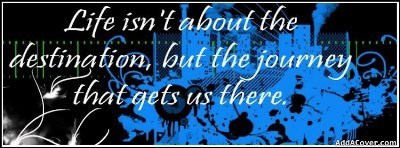 “It is not, in my estimation, a state of virtue, or contentment, or nirvana, or happiness. It is not a condition in which the individual is adjusted, or fulfilled, or actualized. To use psychological terms, it is not a state of drive-reduction, or tension-reduction, or homeostasis.
“It is not, in my estimation, a state of virtue, or contentment, or nirvana, or happiness. It is not a condition in which the individual is adjusted, or fulfilled, or actualized. To use psychological terms, it is not a state of drive-reduction, or tension-reduction, or homeostasis.
The good life is a process, not a state of being.
It is a direction, not a destination.”
If life is a never-ending journey, how do we know which direction we need to go? Luckily, Carl Rogers gives us a clue: we need to listen to ourselves! “The direction which constitutes the good life is that which is selected by the total organism, when there is psychological freedom to move in any direction.”
Listen to yourselves, hit the direction you care about. I wish you a great journey, a great ‘good life’!
January 8, 2015
Why a Working Business Model is One of the Ultimate Creative Endeavors
A working, effective Business Model is probably one of the ultimate creative endeavors. It is often the result of a long-winded development effort, including many trials and errors. It reflects a relationship between a number of stakeholders with the aim of creating value to most of them. It can be shown and described like a piece of art. And it is a practical, real-life invention.

The Business Model Framework from the book Business Model Generation
The interesting observation here is that as a creative endeavor, the most successful, disrupting business models are those that go beyond the conventional, that reflect ‘out-of-the-box’ thinking. Thus those that develop those business models need to be somewhat unconventional and able to see beyond the obvious practice.
It also requires the business model generation process to be highly creative, without bounds, and highly iterative as well. Specific brainstorming situations need to be created accompanied by data retrieval or generation. It can sometimes take years to come up with a workable business model, and many trials and iterations.
And when it works, what a marvelous creation! And what really makes it an ultimate creation, for me, is how it creates value for a large number of stakeholders, not to mention that fact that it creates strong links and experiences for the same many people!
A business plan is one of the most powerful contemporary works of art.
Note – the figure is from the highly recommended book Business Model Generation – A Handbook for Visionaries, Game Changers, and Challengers.
January 6, 2015
How Integrated Systems Increase Fragility and Decrease Adaptability
The more systems are integrated, the higher the potential that a mistake (involuntary or purposefully introduced) can propagate trough the entire system and pollute its overall accuracy. Hence, integrated systems are intrinsically fragile.
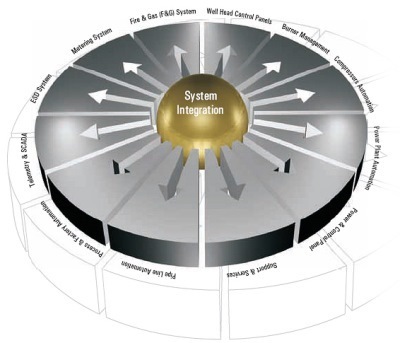 Promoters of integrated systems fight this issue by adding a number of filters to the entry of information in the system, de facto decreasing significantly the system flexibility and the possibility to adapt to changing needs.
Promoters of integrated systems fight this issue by adding a number of filters to the entry of information in the system, de facto decreasing significantly the system flexibility and the possibility to adapt to changing needs.
John Hagel mentions that it is the same with organizations: the bigger and more monolithic the organization, the more fragile it can be. And very large, integrated organizations and systems are an impediment to change and adaptation.
The solution is hence modularity and creation of small, understandable, and interconnected entities or systems. The key lies in devising standard interfaces to deal with the interfaces. This obviously has an additional cost compared to integrated systems and organizations (it is less efficient), but on the medium term, the adaptation capability should produce better and more resilient results (thus, a higher effectiveness)
When will we stop thinking that efficiency, integration, standardization is better? Do we need some more meltdowns to prove that effectiveness, modularity and diversification is much more desirable?
Hat tip to ParisTech review, papers on the future of the organization (in French).
December 18, 2014
Fourth Revolution takes a break for Christmas…
Hi all followers
The Fourth Revolution blog is taking a break for Christmas and New Year as I will be travelling through New Zealand’s South Island in a campervan with the family and I can foresee scarce internet connections!
Enjoy your year-end festivities..!
We will be back early January with new content and thoughts!




